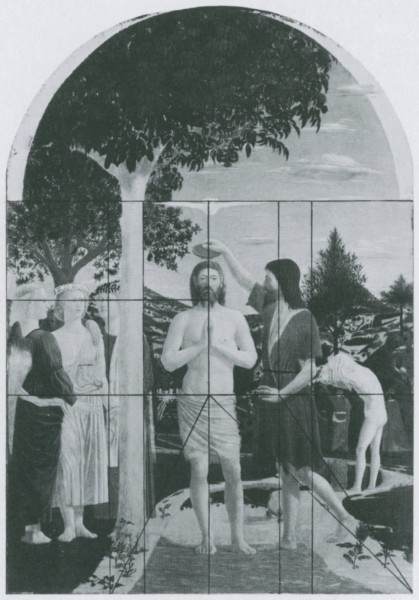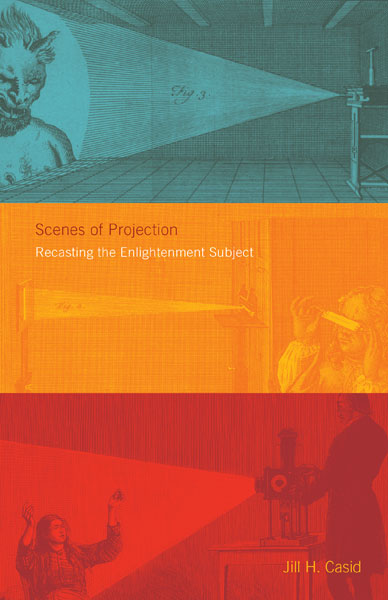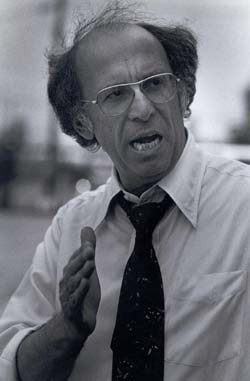Craft and Conquest: The 15th Venice Architecture Biennale, May 28-November 27, 2016

Aravena’s entire Biennale, then, its emphasis on “natural” materials—the omnipresence of earthen brick and tile—its insistence on the collaboration among state and humanitarian actors, all lead to the quayside behind the Arsenale, to a Catalan vault through which a starchitect advances his brand and a global conglomerate advances its sales.
The Significance of Form

Formalism assumes that the features being picked out are part of a “best possible” construction of what was done when the work was created. In this way formalism can work equally well for those who see intention as equivalent to meaning and those who see intention as a naïve and unworkable construct. In the latter case it is able at once to attribute significance through the quasi-intentionalist mode of writing described here, and to pass in everyday description as “anti-intentionalist,” as writers from Wölfflin and Shklovsky to Clement Greenberg have combined this general way of operating with explicit denials of the admissibility of artists’ actual, consciously made, statements about their own work.
Two Collage Ballads

I buy a few months. I try to behave.
Tomorrowman

Everyone will get one.
Tomorrow. They are tomorrow’s apples,
And they are sweet.
from Melancholy Occurrence

Drawn from coroner’s inquests and newspaper reports from England between the 1770 and 1920 — very much in the spirit of Charles Reznikoff, nothing invented.
Kandinsky: Tactical, Operational, Strategic

Imagine two surfaces: one, a flat stretch of canvas secured to a physical support; the other, a picture plane. What’s the difference? The canvas is an actual piece of fabric upon which a painter will apply physical material with brushes, rags, and trowels to render an image, whether abstract or representational. The picture plane is an immaterial and intangible screen of pictorial projection. The image that sustains the virtual reality of the depiction is neither identical to nor reducible to the pigment and canvas that literally constitute its configuration.
What We Talk About, When We Talk About Projection: Review of Jill H. Casid, Scenes of Projection: Recasting the Enlightenment Subject

For a long time, magic lanterns were thought to be educational toys, mere trifles of entertainment. Those who posited some greater significance to these objects—by, for instance, drawing a connection to madness—paid scant attention to questions of structure and form. Jill Casid uncovers a different story in Scenes of Projection. Her goal is to uncover a deeper, and more difficult, political history of these devices that cuts across the terrain of colonialism and gender.
“I believe Trump like I believed Obama!” A case study of two working-class “Latino” Trump voters: my parents

It might be a huge stretch for some anti-racists to view Trump voters as something other than “deplorables,” or, rich, white, racists—but, the hope with this case study is that we might stop and reflect on who gains when we write off not just half the country but a large portion of the working class as racists.
Mazzocchi and the Moment

The most immediate challenge we face now is to prepare for what is going to be the political equivalent of a street fight that we’ll have to wage between now and at least 2018 just to preserve space for getting onto the offensive against the horrors likely to come at us from Trump, the Republican congress, and random Brown Shirt elements Trump’s victory has emboldened. At the same time, however, we need to reflect on the extent to which progressive practice has absorbed the ideological premises of left-neoliberalism.
Listening to Trump

Contrary to how he was portrayed in the mainstream media Trump did not talk only of walls, immigration bans, and deportations. In fact he usually didn’t spend much time on those themes. Don’t get me wrong, Trump is a racist, misogynist, and confessed sexual predator who has legitimized dangerous street-level hate and his administration will almost certainly be a terrible new low in the evolution of American authoritarianism. But the heart of his message was something different, an ersatz economic populism that spoke directly, clearly and emotionally to legitimate working class concerns.


